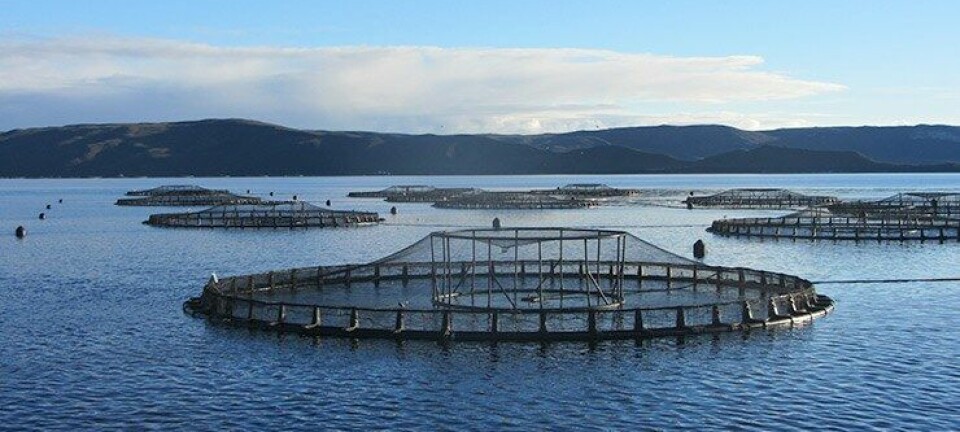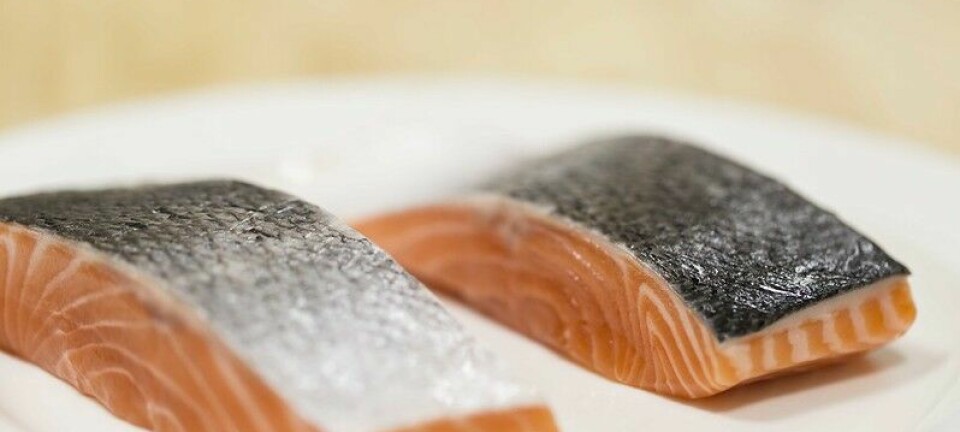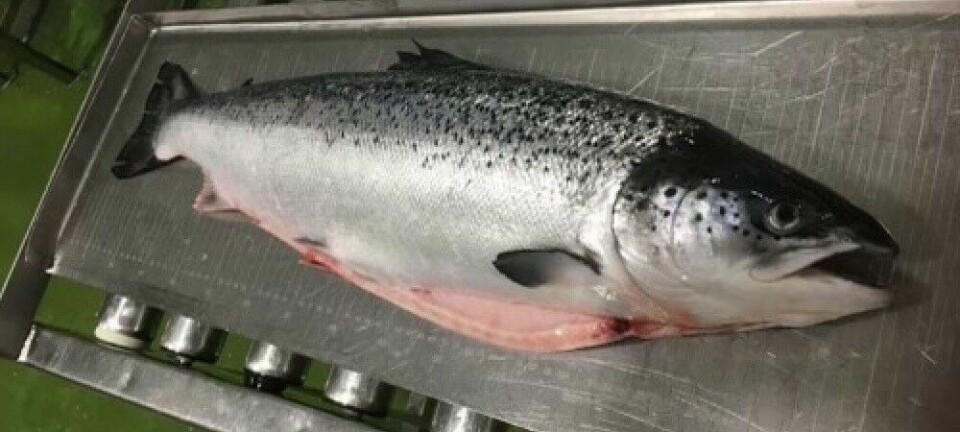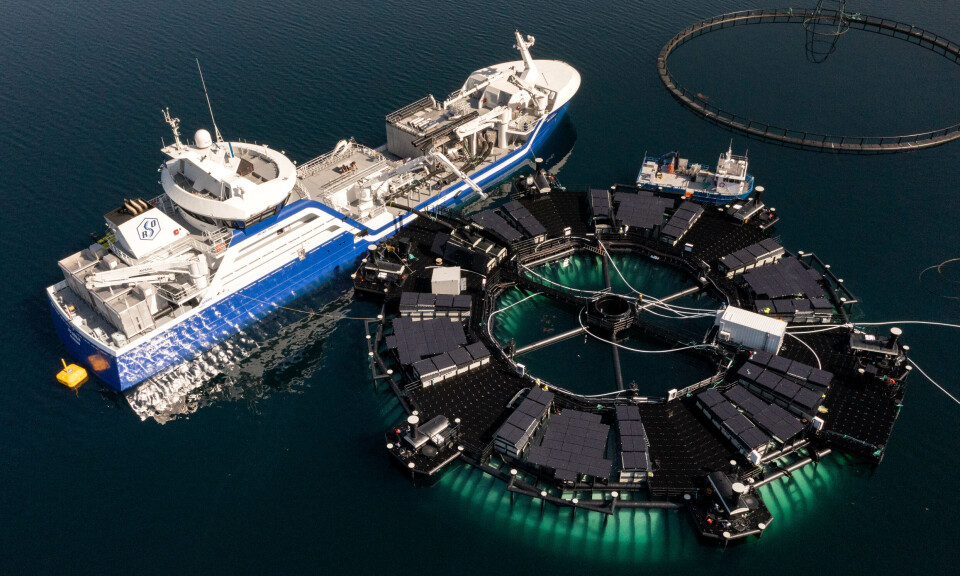
Life is sweet in the Donut
Salmon are thriving in floating closed containment system, says project manager.
The first full batch of salmon in the Marine Donut floating closed containment system are doing well, the project’s manager Geir Andresen has said.
The Donut, a torus-shaped floating closed containment system that has been in development for several years, was successfully used for a trial batch of more than 15,000 market size fish and was stocked with a new batch of 200,000 fish earlier this summer. The world’s second-largest salmon farmer, SalMar, is growing the fish from 2.5 kg to 5.5 kg in the Donut, which has a volume of 22,000m³.
Andresen, a partner in the Donut’s developer and manufacturer, Bluegreen AS, said in Bluegreen’s website that the Donut had performed excellently.
“The facility has delivered on all fish health parameters,” he said. Mortality had been minimal, and the fish are thriving, as evidenced by their even distribution throughout the water volume and their feeding.
There had been no lice infestation, and the feeding system was working well.
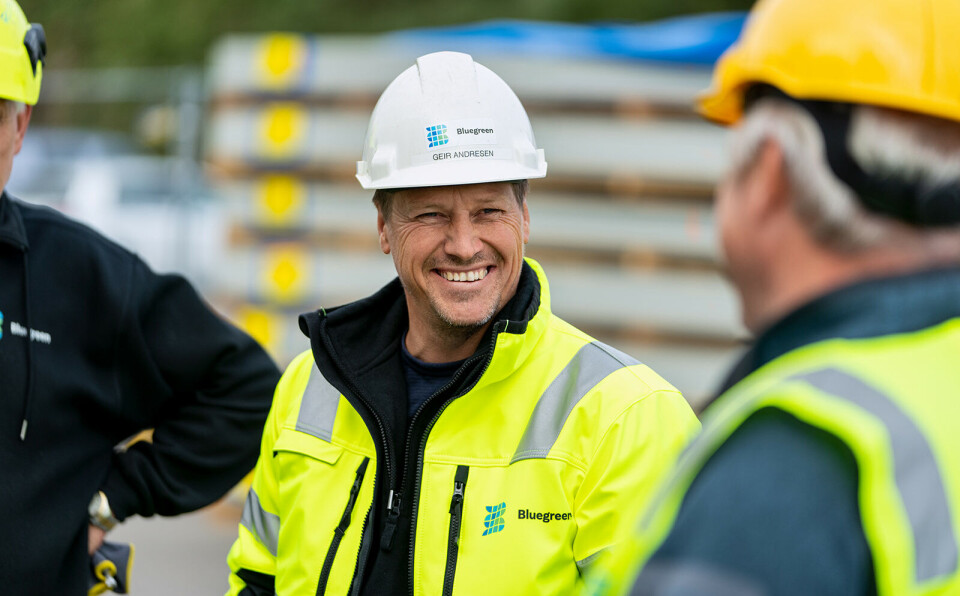
Bluegreen and SalMar had short periods with slightly lower water temperatures in the facility than expected, which slightly reduced the salmons’ activity.
“That’s a known issue. We draw water from a depth of 40 metres. It maintains a consistent temperature of around 8°C year-round,” explained Andresen. “This is in contrast to open net pens, which have warmer water temperatures in the summer and colder in the winter. The fish in Marine Donut will therefore have steady growth throughout the year.”
Bluegreen’s focus now is on gaining operational experience and optimising all parameters.
Fine-tuning
“Now that we are in full operation, we've identified the need to fine-tune the solution for sludge collection and dead fish handling. We are also working on optimising the flow patterns, now that we can conduct real tests with fish in the facility instead of just simulations in a computer programme. It’s very educational,” said Andresen.
The Donut has a maximum allowed biomass of 1,100 tonnes. As the fish gain weight and this limit if approached, approximately 25,000 fish will be removed. The remaining fish will stay in the facility until they reach a harvest weight of 5.5 kg, likely in October.
“It typically takes 90 days for growth from 2.5 to 5.5 kg,” said Andresen. “Since this is the first batch in Marine Donut, we don’t yet know if it will happen faster in a controlled environment. It will be very exciting.”
Watch a video of the Marine Donut being stocked.
Opportunity in Canada
Norway-based Bluegreen has a subsidiary in Canada and is
confident that it will be able to offer the Marine Donut to salmon farmers in
British Columbia, where open net pen salmon farms will be banned from June
30, 2029. The federal government has said it will consider licensing marine
closed containment systems in BC but has not yet specified what requirements those
systems must meet.
“We have now a commercial product and are confident that we can quickly scale our capacity to build several systems in British Columbia simultaneously as we are at our manufacturing site in Stathelle, Norway,” said Bluegreen chief executive Nils-Johan Tufte in June.
“We have the leadership, expertise, manufacturing site, partnerships and motivation to help the industry in BC navigate the transition and continue producing premium-quality salmon for the benefit of the communities and First Nations territories where it is produced.”





